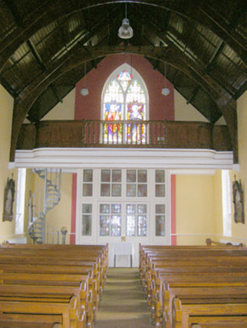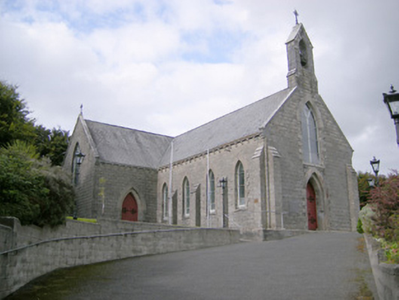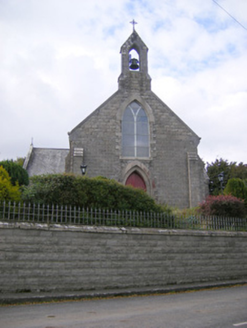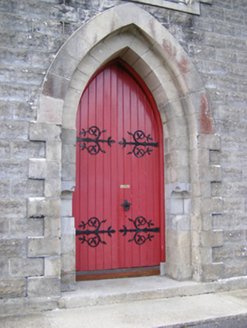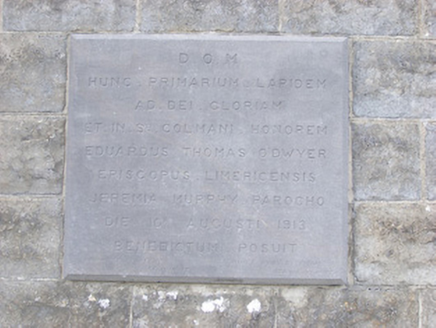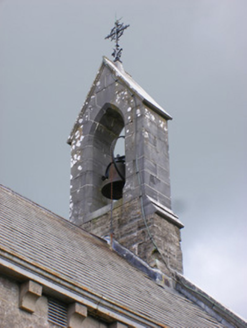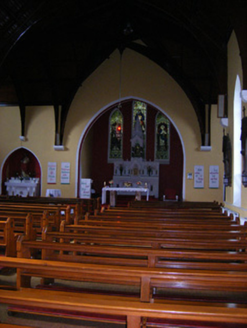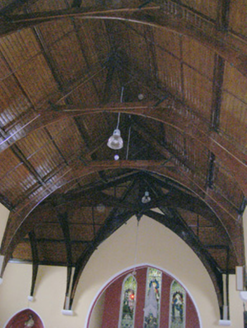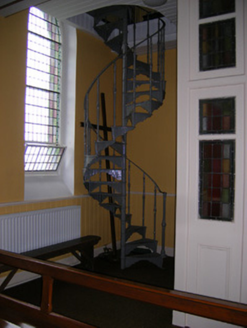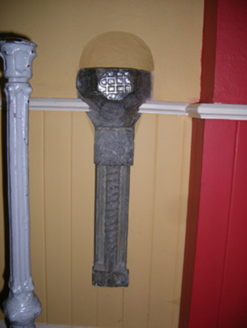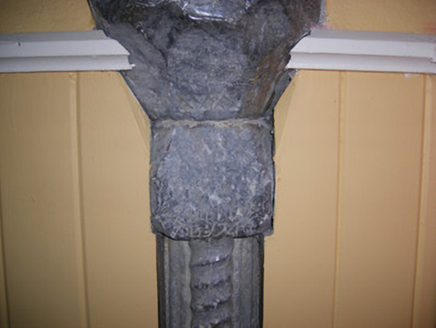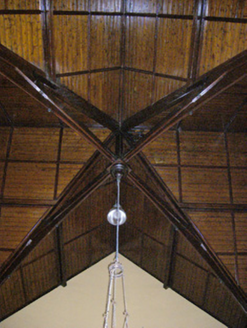Survey Data
Reg No
21901906
Rating
Regional
Categories of Special Interest
Architectural, Artistic, Social
Original Use
Church/chapel
In Use As
Church/chapel
Date
1910 - 1915
Coordinates
126447, 142982
Date Recorded
16/09/2008
Date Updated
--/--/--
Description
Freestanding cruciform-plan gable-fronted Gothic Revival Roman Catholic church, built in 1913. Comprising four-bay nave, chancel to north, two-bay single-storey extension to east, lean-to to north elevation and two-bay single-storey extension to west. Pitched slate roof with render brackets, limestone copings with cast-iron cross finials and cut limestone open work bellcote to south elevation with cast-iron cross finial. Rusticated concrete walls having buttresses to nave and south elevation. Inscribed limestone plaque to south elevation. Pointed arch opening to south, east and west elevations with concrete block-and-start surrounds, concrete sills and Y-tracery stained glass windows. Lancet openings to nave having concrete block-and-start surrounds, concrete sills and quarry glazed coloured glass windows. Pointed arch openings to south elevation and transepts, south elevation with concrete block-and-start surrounds having inset limestone fonts and double-leaf timber battened doors with ornate cast-iron strap hinges. Timber scissors truss ceiling to interior with concrete corbels. Marble reredos to altar. Timber porch to entrance having quarry glazed coloured glass overlights over timber panelled double-leaf doors with quarry glazed coloured glass panels. Timber gallery to entrance with cast-iron spiral staircase. Limestone font dated 1746 to south-east interior wall. Pair of square-profile rusticated piers to south-east with rusticated boundary walls having spear-headed cast-iron railings. Graveyard to south-east.
Appraisal
There is evidence of fine craftsmanship in both the exterior and interior detailing of this imposing early twentieth-century church. It was built under the leadership of Fr Jeremiah Murphy and according to the inscription on the foundation stone, the builder was John Ryan & Sons and the architect was Brian Sheehy. The elevations of the edifice are greatly enlivened by the rich textural effects of the rusticated concrete, which is an early example of the use of this material. This church occupies a prominent position at the crossroads in the village of Kilcolman, forming a pleasant and dominant feature in both the streetscape and surrounding landscape.
